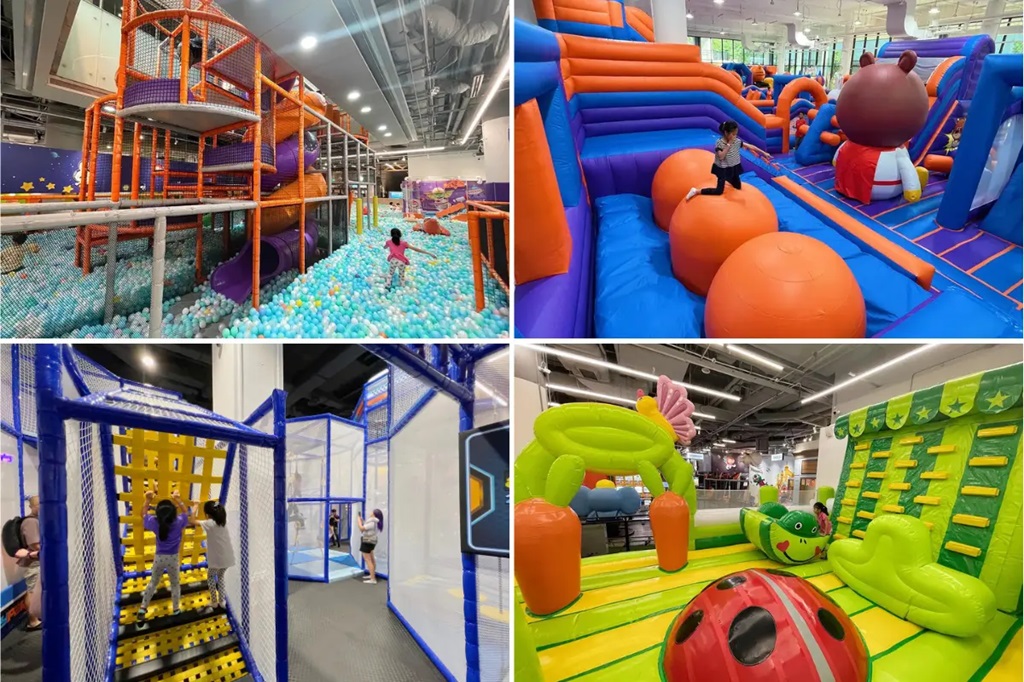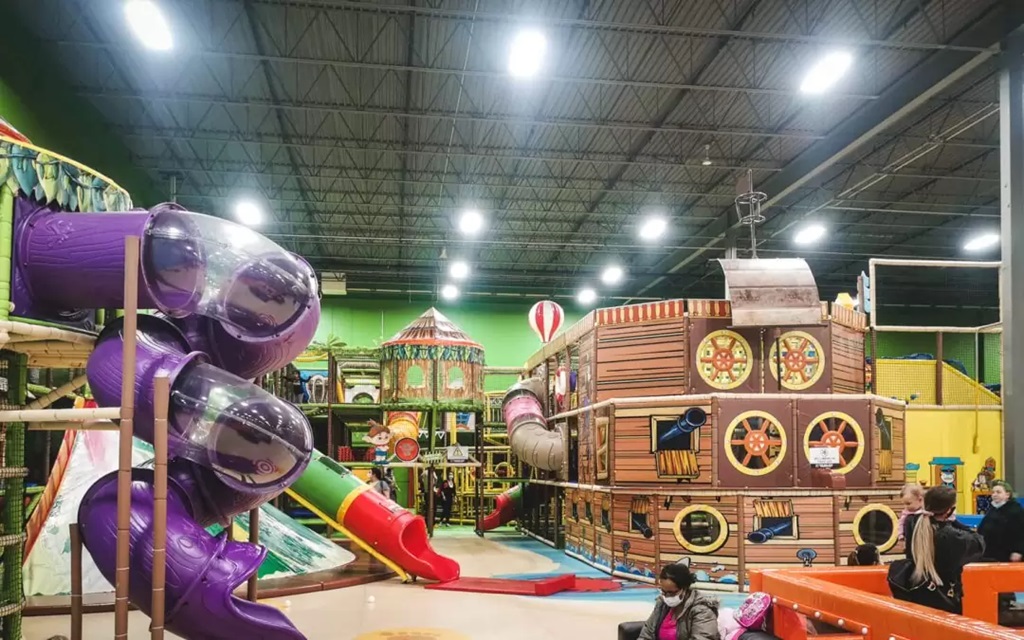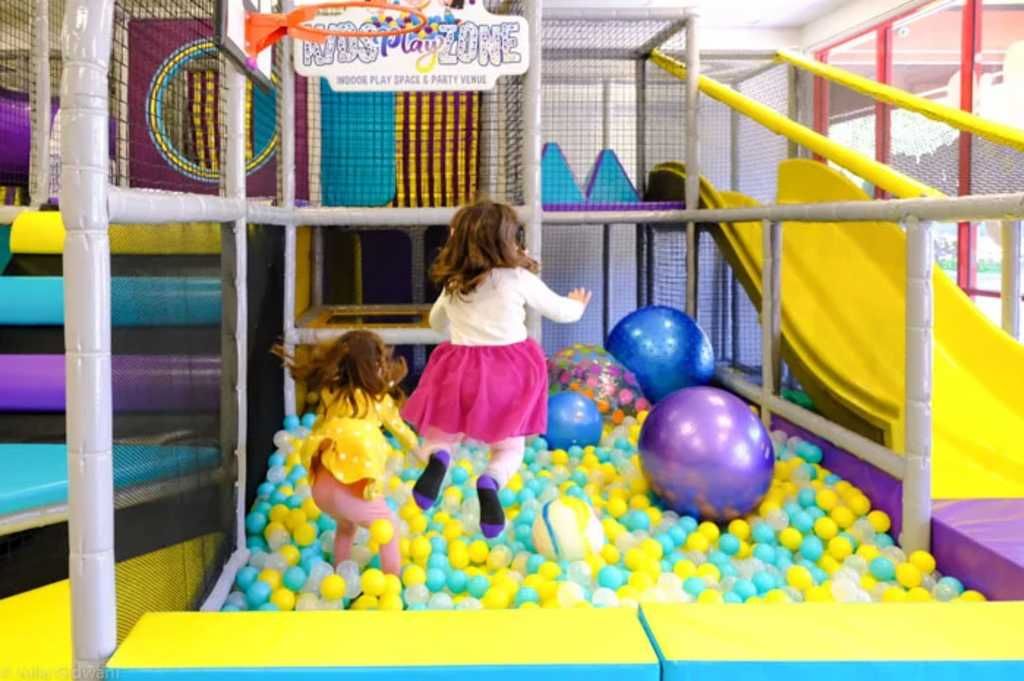Indoor play for toddlers provides a safe and stimulating environment for their physical and mental development. Introduce your toddler to a world of fun and learning with indoor play. From climbing structures to soft play areas, there are plenty of activities designed to keep your little one engaged and entertained. Not only does indoor play provide a safe environment for exploration, but it also helps toddlers develop their gross motor skills, coordination, and social interaction.
With a variety of play options available, as highlighted by resources like Thebinderblog, you can choose activities that cater to your child’s interests and abilities. Whether it’s jumping on a trampoline, playing with building blocks, or exploring sensory play stations, indoor play allows toddlers to learn through play and have a great time while doing so. The diversity of activities ensures that every child finds something they enjoy, promoting their physical, cognitive, and emotional development.
So, the next time you’re looking for an indoor activity, consider the benefits of indoor play for toddlers, as it offers a fun, engaging, and beneficial experience for young children.
Benefits Of Indoor Play

Toddlers love to be active and explore their surroundings. Indoor play provides them with a safe and controlled environment where they can engage in various activities. There are numerous benefits of indoor play for toddlers, ranging from physical development to cognitive enhancement.
Physical Development
Indoor play helps toddlers develop their motor skills and physical abilities, which are crucial for their overall growth. Here are some ways in which indoor play contributes to their physical development:
- Running, jumping, and climbing on soft play equipment improves gross motor skills.
- Manipulating small objects, such as building blocks or puzzles, enhances fine motor skills.
- Engaging in activities like dancing or yoga improves balance and coordination.
- Playing with balls or other objects that require throwing or catching enhances hand-eye coordination.
Cognitive Development
Indoor play also plays a significant role in the cognitive development of toddlers. It stimulates their minds and helps them gain crucial skills needed for learning and problem-solving. Let’s explore some of the cognitive benefits of indoor play:
- Playing pretend games, such as pretending to cook or be a doctor, encourages creativity and imagination.
- Engaging in puzzles and memory games improves cognitive skills, including attention span and concentration.
- Exploring different textures and shapes through sensory play stimulates sensory receptors and promotes cognitive development.
- Playing board games or engaging in cooperative play teaches toddlers about rules, turn-taking, and social interaction.
Indoor play for toddlers is not only entertaining but also essential for their physical and cognitive development. By providing them with a variety of activities, parents and caregivers can help toddlers grow into well-rounded individuals. So, let them explore and have fun indoors!
Setting Up The Space
Create an engaging indoor play space for toddlers with a strategic setup and organization. Utilize soft mats, interactive toys, and child-sized furniture to encourage active play and learning. A well-planned play area can enhance cognitive development and keep toddlers entertained for hours.
First and foremost, when creating an indoor play area for toddlers, it is essential to ensure a safe environment for them to play and explore. Incorporating a theme such as deep blue indoor play can add an exciting aspect to the space while maintaining a focus on safety. By taking a few precautions, such as using soft, non-toxic materials and ensuring that the play area is free from sharp edges and hazards, and setting up interactive zones, you can create a space that not only captivates their imagination with an underwater adventure theme but also provides a safe and enjoyable environment for your little ones.
This approach allows toddlers to engage in playful activities that are both fun and beneficial for their development.
Safe Environment
To provide a safe environment for your toddlers, consider these key factors:
- Childproofing the space by covering electrical outlets, securing furniture to the walls, and removing any small objects that could pose a choking hazard.
- Using soft mats or cushions to cushion falls and prevent injuries.
- Keeping surfaces clean and germ-free by regularly sanitizing toys and play equipment.
By implementing these safety measures, you can have peace of mind while your toddlers happily engage in play.
Interactive Zones
Creating interactive zones within the play space encourages your toddlers to explore, learn, and have fun. Here are a few ideas for interactive zones that you can incorporate:
Introduce a sensory play zone where your toddlers can engage their senses through various activities:
- Filling bins with different textured materials like sand, rice, or water filled with floating objects.
- Offering different textured toys to stimulate their sense of touch.
- Using scented play dough or sensory bottles filled with colorful objects to engage their sense of smell and sight.
Creating a sensory play zone not only entertains your toddlers but also helps in their cognitive and sensory development.
A dedicated imagination corner can fuel your toddlers’ creativity and imaginative play. Here’s how you can set it up:
- Provide a variety of props such as dress-up costumes, hats, and pretend-play accessories.
- Add a small table and chairs for arts and crafts activities.
- Display a selection of age-appropriate books to encourage storytelling and reading.
An imagination corner allows your toddlers to indulge in imaginative play, enhancing their cognitive and social skills.
Include a designated area for physical activity, which is crucial for your toddlers’ development:
- Place soft climbing structures or foam blocks for them to climb and explore.
- Provide a mini trampoline or a small slide to encourage active play.
- Set up a mini obstacle course to improve their coordination and balance.
By incorporating a physical activity area, you promote gross motor skill development and keep your toddlers active and energetic. In conclusion, setting up an indoor play space for toddlers requires careful consideration of their safety and engagement. By prioritizing a safe environment and creating interactive zones, you can provide your toddlers with a stimulating and enjoyable space for play and exploration.
Creative Play Ideas
Toddlers are full of energy and curiosity, which makes indoor play a fun and essential part of their development. Engaging in creative play encourages their imagination, helps them to learn about the world around them, and promotes cognitive and motor skills. Here are some creative play ideas to keep your toddlers entertained and learning.
Sensory Bins
Sensory bins are a fantastic way to engage toddlers in hands-on exploration. Fill a large plastic container with items such as rice, beans, or kinetic sand, along with toys, scoops, and containers for pouring. The variety of textures and materials provide a sensory-rich experience, stimulating their senses and encouraging imaginative play. Sensory bins can be themed around seasons, animals, or even different textures for endless hours of entertainment.
Diy Obstacle Course
Create an exciting DIY obstacle course using pillows, cushions, and other household items. Set up tunnels made from blankets and chairs, and create zones for jumping, crawling, and balancing. This not only promotes physical activity and enhances gross motor skills but also fosters creativity as toddlers navigate the course. With some DIY obstacle courses, you can easily customize the difficulty level and vary the challenges to keep them engaged and entertained.
Incorporating Learning
Discover the benefits of incorporating learning through indoor play for toddlers. Engage their minds and senses with interactive activities that foster growth and development. Create a stimulating environment that encourages curiosity and builds essential skills.
Incorporating Learning Engaging toddlers in indoor play is not only fun but also an opportunity for them to learn and develop various skills. Incorporating learning into their playtime helps stimulate their minds and encourages their curiosity. From educational games to arts and crafts activities, there are several ways to create a playful learning environment for your little ones.
Educational Games
Educational games are a fantastic way to make learning enjoyable for toddlers. These games can help them enhance their cognitive and problem-solving abilities while also developing fine motor skills. Whether it’s a puzzle, matching game, or interactive game on a tablet, educational games engage toddlers and facilitate their learning journey. To make it even more exciting for them, opt for games that focus on alphabets, numbers, shapes, and colors. Additionally, including games that encourage critical thinking and decision-making will foster their logical reasoning skills from an early age. Remember, learning through play sets a strong foundation for future academic success.
Art And Craft Activities
Art and craft activities not only unleash your toddler’s creativity but also promote their fine motor skills. Engaging in these activities allows them to explore various textures, colors, and materials while developing their hand-eye coordination. Moreover, art helps toddlers express their emotions and thoughts, fostering their communication and self-expression skills. Provide them with child-friendly materials like washable paints, crayons, colored papers, and child-safe scissors. Encourage them to draw, paint, and create using their imagination.
Engaging in simple activities like finger painting, handprint art, or even making collages from torn pieces of paper will keep them entertained while developing their artistic abilities. Some arts and crafts activities can also be educational. For instance, you can create a collage using cut-out pictures from magazines to teach them about different animals, shapes, or objects.
Alternatively, you can incorporate educational themes such as the ocean or space, allowing them to learn while having fun. Incorporating learning through educational games and art and craft activities not only keeps toddlers engaged and entertained but also helps them acquire and refine essential skills. So, make the most out of their indoor playtime by creating a playful learning environment where they can explore, create, and learn in the most enjoyable way possible.
Engaging In Play Together

Playing together with your toddler not only creates a strong parent-child bond but also promotes social interaction and enhances their overall development. Engaging in play provides a wonderful opportunity for parents to connect with their little ones and foster a loving and supportive relationship. Let’s explore how parent-child bonding and social interaction play a vital role in your toddler’s indoor playtime.
Parent-child Bonding
When you actively participate in playtime with your toddler, you establish a deep bond that lasts a lifetime. This one-on-one interaction allows you to create a safe and secure environment for your child, where they can express themselves freely. By showing interest in their play, you demonstrate your love and care, boosting their self-esteem and emotional development. Through joint play, you can also introduce values, teach important life skills, and create cherished memories together.
Social Interaction
Engaging in play together with your toddler not only strengthens your parent-child bond but also fosters essential social skills. When you engage in pretend play or group activities, your child learns about sharing, taking turns, and cooperating with others. These social interactions build the foundation for positive relationships in the future. Furthermore, group play can help your toddler develop empathy, understanding, and respect for others, promoting a sense of community and teamwork.
Encourage your child to engage in playdates or join toddler playgroups to enhance their social skills further. These experiences provide opportunities for them to interact with peers, learn from their actions, and develop valuable social skills like communication, problem-solving, and conflict resolution.
Remember, engaging in play together is not just about keeping your little one entertained. It plays a crucial role in their overall development by strengthening their parent-child bond and promoting valuable social skills. So, make time for joint play activities and watch your toddler flourish both emotionally and socially.
Frequently Asked Questions For Indoor Play For Toddlers
Can Indoor Play Help Toddlers Develop Their Motor Skills?
Yes, indoor play provides a safe environment for toddlers to develop their motor skills through activities like crawling, climbing, and playing with toys. It improves their coordination, balance, and fine motor skills.
What Are Some Indoor Play Ideas For Toddlers?
Some fun indoor play ideas for toddlers include building forts with cushions, engaging in sensory play with rice or water, having a dance party, playing with puzzles or blocks, and creating art with washable paints or playdough.
How Can Indoor Play Benefit Toddlers’ Social Development?
Indoor play offers toddlers opportunities to interact with others, fostering their social skills. They learn to take turns, share toys, and communicate with their peers, improving their ability to make friends and develop empathy. It also helps build their self-confidence and independence.
Conclusion
Incorporating indoor play activities for toddlers is crucial for their physical and cognitive development. Exploring the nuances between Futsal and Soccer reveals key similarities and differences, much like how engaging in activities that support creativity, problem-solving, and physical movement allows children to thrive in a safe and stimulating environment. By understanding the distinct aspects of each sport, parents can offer their toddlers a diverse range of indoor play options, enriching their experiences and creating lasting memories.





